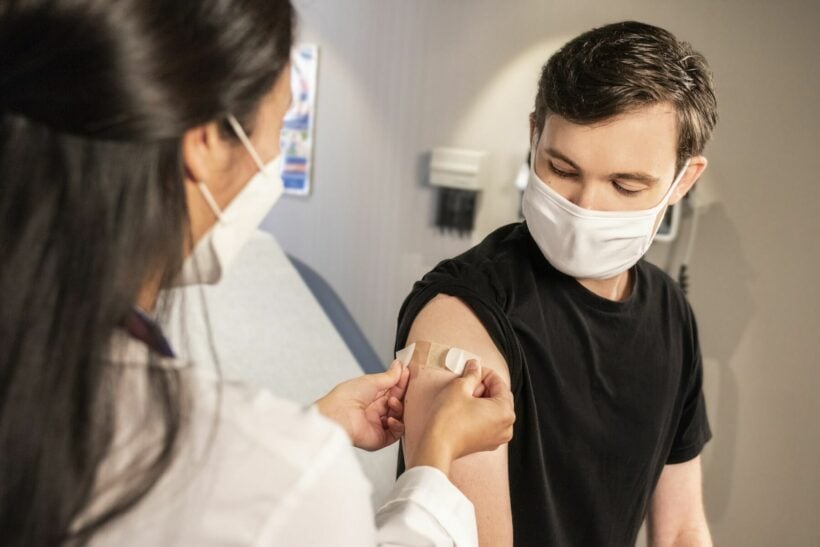Common Diseases in Thailand

Boasting stunning natural beauty, warm weather, and beautiful culture, Thailand is a gorgeous tropical country. Because of these reasons, Thailand is one of the world’s most popular tourist destinations. But due to factors like biodiversity, socioeconomic background, tropical climate, and frequent interaction between humans and animals, there are certain diseases visitors need to watch out for. Therefore, it’s always a good idea to do some research first about the most common disease before you fly to the country. That way, you can prepare some prevention measures for getting sick during your trip. To help you with your research, here are the most common diseases in Thailand.
1. Dengue Fever
Dengue fever is a common disease in Southeast Asia, especially during the wet season when the transmission rates are higher. It’s a mosquito-borne viral infection that causes a severe flu-like illness. It causes fever, body aches, headaches, and a skin rash with red spots. In some cases, the viral infection may cause a potentially lethal complication known as severe dengue or Dengue Hemorrhagic Fever (DHF).
To protect yourself from dengue while travelling or living in Thailand, it’s important to get the dengue vaccine. It’s also a good idea to use mosquito repellents and remove any water stagnation around your place of stay. Be sure to seek professional medical care if you experience symptoms.
2. Malaria
Another common disease to watch out for is malaria. Like dengue, the risk of malaria increases during the wet season. Malaria is caused by a parasite that is spread to humans through the bites of infected female Anopheles mosquitoes. The symptoms include high fever, chills, headache, fatigue, and general discomfort. Malaria is a life-threatening disease that can lead to mental confusion, severe seizures, coma, and even death. Therefore, those experiencing symptoms need to seek emergency medical attention immediately.
While large cities like Bangkok, Chiang Mai, and Pattaya are relatively free from the risk of malaria, other areas in Thailand are still vulnerable. Therefore, be extra careful when travelling to more rural or remote areas, such as provinces that border Myanmar, Cambodia, and Laos, as well as Krabi, Phang Nga, Surat Thani, Nakhon Si Thammarat, Narathiwat, and Pattani. You can take preventive antimalarial medication before and while travelling to high-risk areas. Anti-mosquito bite measures, such as insect repellent or a mosquito bed net, are highly recommended.
3. Japanese Encephalitis
Japanese encephalitis is another mosquito-borne disease. When infected with this disease, people usually experience confusion, fever, headache, motor deficit, seizures, and vomiting. In severe cases, it can lead to brain inflammation that results in neurological or cognitive damage.
The risk of contracting Japanese Encephalitis is not as high as other mosquito-borne diseases, such as dengue. Japanese Encephalitis is most common in the northern region (Chiang Mai Valley). There is currently no efficient treatment available, so be sure to get the vaccine at least 6 weeks before travelling to a high-risk area. Protecting yourself from mosquito bites by using insect repellent is also an effective way to prevent contraction.
4. Leptospirosis
Leptospirosis is a bacterial disease that spreads through contact with water, soil, and food contaminated with an infected animal’s urine, blood, or tissue. Symptoms of leptospirosis include severe headache, high fever, muscle pain, redness of the eyes, haemorrhages, abdominal pain, jaundice, chills, vomiting, rash, diarrhoea, and mucous membranes. However, some people may display no symptom.
Participating in water-related activities, as well as visiting flooded or agricultural areas, may increase your risk. The best way to protect yourself from this disease is to avoid suspicious water contacts such as puddles, swamps, canals, and dirty rivers.
5. Seasonal Flu
The wet season usually coincides with the flu season in Thailand. If you have this common disease, you’ll usually experience symptoms like sneezing, fever, tiredness, runny nose, headache, chills, cough, body aches, and sore throat. Vaccination can prevent you from getting seasonal flu in Thailand. However, simple measures like cleaning your hands often and avoiding close contact may also help.
6. Water Borne Diseases
Water-borne disease is transmitted by contact with water or drinking water. It is typically spread by consuming water that has been tainted with human or animal faeces, both domestic and wild. Food- and water-borne illnesses frequently coexist, with diarrhoea serving as the primary symptom. According to reports, infection via contaminated water or soil is Thailand’s third most lethal infectious disease.
The best form of protection against water-borne diseases is to always drink bottled or clean water from a reputable source. Be sure to avoid drinking tap water in Thailand. It’s also a good idea to bring antidiarrheal medications.
7. Food Poisoning
Gastrointestinal diseases are frequently brought on by exposure to contaminated food in Thailand. Contamination of food can be a result of bad hygiene and improper food handling techniques. In Thailand, diarrheal illnesses have been a significant public health issue, and food is thought to be the primary vector for the spread of bacteria, according to WHO. One of the main causes of diarrheal diseases in Thailand is eating habits in particular regions, such as the consumption of raw or undercooked food.
Always make safe choices to prevent food poisoning. This means that you should avoid eating anything raw or undercooked. Moreover, always practice good hygiene.
8. Pneumonia
Pneumonia is another common disease in Thailand, particularly during the wet season. People with pneumonia may experience physical symptoms like clammy skin, shortness of breath, cough, fever, shaking, and chills. Pneumonia can be treated successfully. However, it can potentially be fatal if left untreated.
Since pneumonia is highly contagious, be sure to stay away from those infected. Conversely, you should also try to keep other people from getting infected if you have pneumonia. To lower your risk of infection, always wash your hands with soap and maintain good personal hygiene.
These are some of the most common diseases in Thailand. To make sure you have a great and safe stay in the country, it’s a good idea to take safety precautions. Have a travel health consultation and get the necessary vaccines six to eight weeks before your departure, bring mosquito repellent, and always be mindful of what you consume. As long as you take all the necessary precautions, your trip to Thailand should be a fun and memorable one!
Want to learn more about Thai culture before visiting the country? Check out these 6 things you need to know about Thai culture.
Latest Thailand News
Follow The Thaiger on Google News:


























